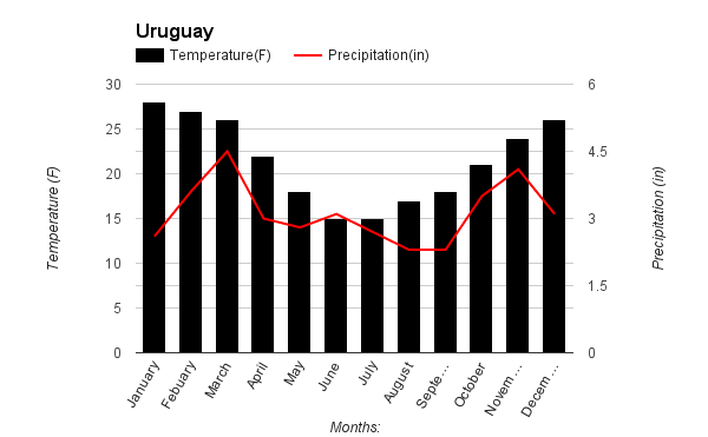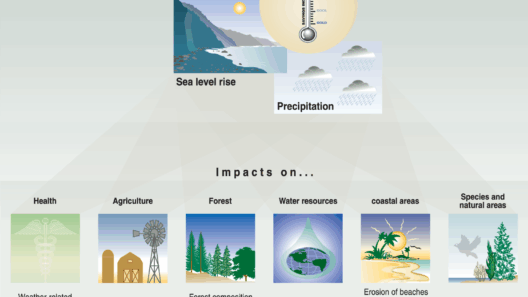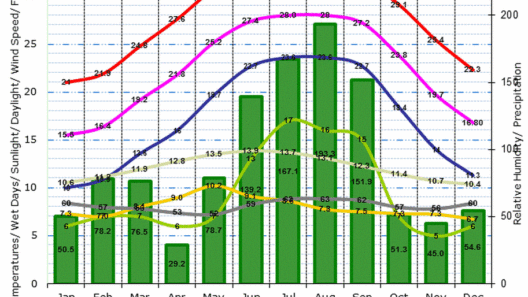Uruguay, a small yet vibrant nation located in the southeastern part of South America, is often celebrated for its mild temperate climate and inviting coastal breezes. Its geographical positioning, bordered by the Atlantic Ocean and the Río de la Plata, gives the country a unique climatic character that appeals to both residents and visitors alike. Understanding the nuances of Uruguay’s climate encompasses a variety of factors, including seasonal variations, regional disparities, and the influence of oceanic weather patterns.
The climate of Uruguay is predominantly classified as a humid subtropical climate, which facilitates a distinctive pattern of mild temperatures throughout the year. In accordance with the Köppen climate classification, this region experiences hot summers and mild winters, accompanied by an equitable distribution of precipitation across the seasons. As such, the climate is largely tempered by the surrounding bodies of water, contributing to both its biodiversity and agricultural viability.
Spring (September to November) in Uruguay is a delightful period characterized by blossoming flora and progressively warmer temperatures. Average daily temperatures range from 12°C to 24°C (54°F to 75°F). During this time, coastal cities such as Montevideo and Punta del Este witness a surge in tourism, as outdoor activities and cultural festivals take place amidst an idyllic backdrop of blooming gardens and sun-dappled landscapes.
Summer (December to February) unveils the peak warmth with thermometers soaring between 20°C and 30°C (68°F to 86°F). Coastal breezes are especially prevalent during this season, providing much-needed relief from the sweltering heat. The summer months beckon beachgoers to the myriad of sandy shores along the coast. Visitors flock to popular spots like Punta del Este, where the vibrant atmosphere and maritime enjoyment reign supreme. However, it is also a period marked by an increase in rainfall, often manifesting as short but intense thunderstorms. This precipitation is vital for replenishing aquifers and sustaining the verdancy of Uruguay’s landscapes.
As summer gives way to autumn (March to May), temperatures begin to gradually decline, offering a reprieve from the heat. The average temperatures during this season hover between 10°C and 22°C (50°F to 72°F). Harvest season commences, showcasing Uruguay’s rich agricultural heritage. The vineyards in Canelones and the orchards throughout the country undergo a transformation as they yield fruits and wines, underscoring the importance of this seasonal transition in Uruguay’s economy and tradition.
Winter (June to August) in Uruguay is mild when juxtaposed with many Northern Hemisphere countries. The average temperatures can descend to around 5°C to 15°C (41°F to 59°F), presenting a cooler ambiance that contrasts sharply with the vitality of summer. Although frost is occasionally observed in the southern regions, especially in rural areas, snow is a rare phenomenon in this temperate climate. The tranquil atmosphere in winter invites a different kind of serenity, influencing the local culture with activities tailored for the season, such as cozy gatherings and winter festivals.
Precipitation in Uruguay is relatively evenly distributed throughout the year, although certain regions experience variances. The western regions, particularly near the Uruguay River, may receive slightly more rainfall. However, the overall climate remains conducive to agriculture, making it a fertile ground for the production of crops, including soybeans, rice, and citrus fruits. The consistency of rainfall balances with the prevailing ocean winds, curbing severe climatic fluctuations.
The integration of oceanic elements plays a crucial role in shaping Uruguay’s weather patterns. The Atlantic Ocean tempers temperature extremes, while the prevailing south-easterly winds create what is known as a marine influence. This results in not just mild summers and winters but also abundant humidity, which fuels the verdant landscape. The coastal ecosystem is rich and diverse, hosting an array of flora and fauna that thrive in this pleasant climate, ultimately contributing to the nation’s commitment to environmental conservation.
Climate change poses a significant challenge to the delicate balance of Uruguay’s ecosystem and agricultural framework. Consequently, addressing climate-related issues has become paramount in maintaining the integrity of Uruguay’s environment. Rising sea levels, increased frequency of extreme weather events, and changing precipitation patterns threaten the traditional agricultural practices that support the nation’s economy. Uruguayan authorities, in collaboration with environmental organizations, strive to implement sustainable agricultural practices and restoration initiatives aimed at mitigating these adverse effects.
In terms of outdoor pursuits, Uruguay’s climate creates an unparalleled opportunity for various recreational activities. From vineyard tours and agricultural fairs in the countryside to beach sports along the coastline, residents and tourists can engage with nature year-round. The gentle climate promotes a culture of outdoor living, which is evident in the architecture of homes and public spaces designed to maximize natural light and airflow.
In conclusion, the climate of Uruguay presents an inviting milieu defined by mild temperatures, ocean breezes, and consistent precipitation. These factors foster a rich agricultural landscape and enviable quality of life for its inhabitants. As climate challenges loom on the horizon, Uruguay stands at a crucial juncture, compelled to advocate for sustainable practices that uphold the beauty and integrity of its environment for generations to come. The path towards greater environmental sustainability hinges upon a collective commitment to preserving the natural wonders that characterize this alluring nation.








